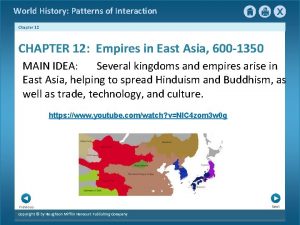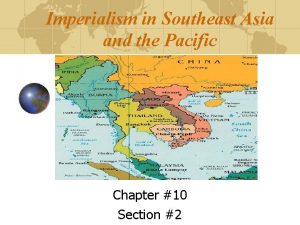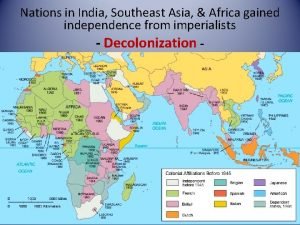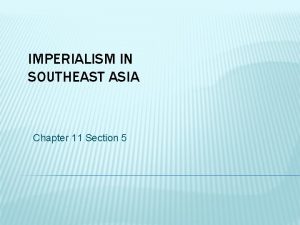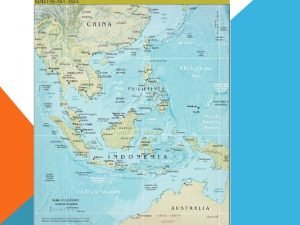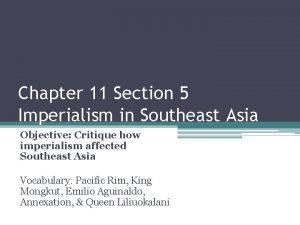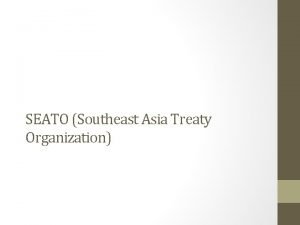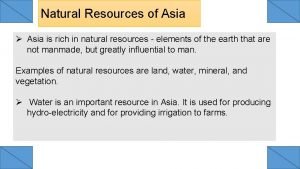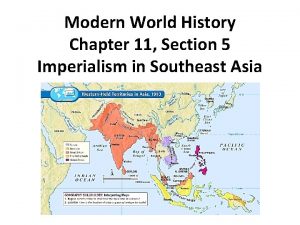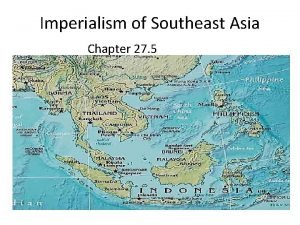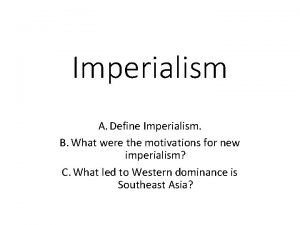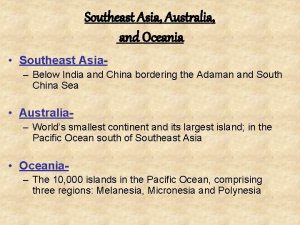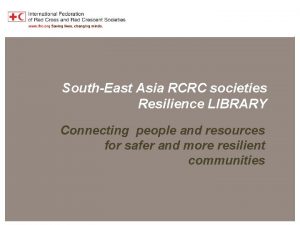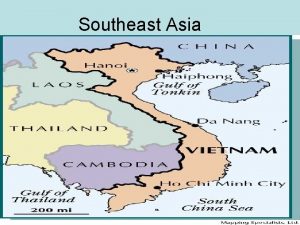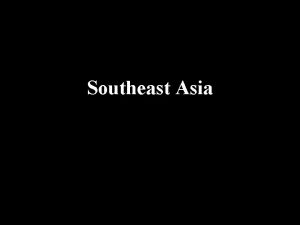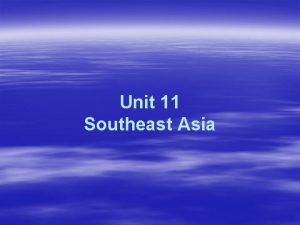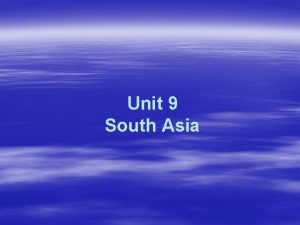Energy Trends In Southeast Asia And China And
























- Slides: 24

Energy Trends In Southeast Asia And China And Its Implications For South China Sea Roundtable Discussion on Offshore Oil and Gas 18 February 2016 Astoria Plaza, Pasig City

Outline • Energy Trends for Southeast Asia and China • SCS as a source of hydrocarbons • Importance of SCS as energy source for littoral states • Observations • Questions

Trends – Southeast Asia (SEA) • • Rapid economic growth, increasing population and urbanization will accelerate energy demand Energy demand increased by 50% from 2000 -2013 and is set to increase by 80% by 2040 (IEA SEA WEO 2015) Most existing prolific fields are mature and are starting to decline; pressure to find new sources mounting Gas exports decline as demand outstrips supply; by 2040, SEA will become net gas importer and will have to import 80% of its oil


Trends - China • • Ranked 1 st for energy consumption (2011) Surpassed US to become largest net importer of petroleum and other liquids (2013); 43% of 2014 world oil consumption fueled by China Largest oil fields are mature, and production has peaked; companies now investing in recovery and efficiency to maximize extraction Largely untapped reserves in the western interior provinces and offshore fields are being developed

Trends - China • • • NOCs became active in expansion since 2008 thru M&As, loans-for-oil deals, long-term commercial investments, and gaining technical expertise in more challenging environments Diversifying energy import sources (IN & MY combines for 27% of the country’s LNG imports) Developing external (e. g. RU, KZ, MYA) and internal pipeline linkages Building strategic petroleum reserves and crude oil storage with a 500 mbl capacity by 2020 Going deeper and farther offshore – HYSY 981 began operation (2012) with more E&P platforms under construction or are already delivered; 1 st deepwater field came online (2014) and others are underway




SCS as a source of hydrocarbons • • • SCS has about 11 bbl of oil and 190 tcf of gas in proved and probable reserves Comparable to proved oil reserves of Mexico and 2/3 of proved gas reserves of Europe, excluding Russia Most fields containing O&G are clustered in near coastal areas and not in the vicinity of contested features

SCS as a source of hydrocarbons • • USGS (2012) estimated that about 12 bbl of oil and 160 tcf of natural gas might exist as undiscovered resources in SCS, excluding Gulf of Thailand other adjacent areas. About 1/5 of these may be found in such areas as Reed Bank CNOOC (Nov 2012) estimated SCS holds around 125 bbl of oil and 500 tcf of natural gas in undiscovered resources


SCS as a source of hydrocarbons • Spratlys and Paracels have not been assessed to hold large O&G resources, though industry sources suggest almost no oil and less than 100 bcf of natural gas in reserves exist in fields near Spratlys; Paracels has even less natural gas and no oil





IMPORTANCE OF SCS AS ENERGY SOURCE FOR LITTORAL STATES • • • CH - 1/3 of CNOOC’s daily production comes from SCS (2011); 53% of gas production comes from western SCS; 20% of oil production are obtained from shallow offshore reserves e. g. Pearl River Basin IN - oldest and largest fields are outside SCS (e. g. Sumatra, Aceh, Kalimantan) TH – 80% of oil and majority of gas production comes from offshore Gulf of Thailand Majority of O&G prod by VN, MY, BR and PH came from SCS However, E&P in SCS is confronted by technological, financial and political challenges




Observations • • SCS more important as an energy source for SEA than to PRC; however, SEA energy exports is important for PRC As energy demand exceeds supply, competition for access to SCS’s offshore energy resources will escalate Increasing joint exploration, investment of NOCs of littoral states, e. g. Pertamina with Petronas, PVN in Natunas; CNPC, Petronas in IN; PTT in VN States which are more dependent on SCS for their energy security and exports demonstrate more openness for JD, e. g. VN (with TH, MY, PRC), MY (with VN, BR)


Questions • • How does PH pvt upstream sector see JD? How about PH govt’s view of JD? Any emerging state position on JD? What is the status of PRC (e. g. CNOOC) investments in PH energy sector? SC 57, Batman, CNG? Are PRC investments considered as PH vulnerabilities? How does the current PH govt position impact on E&P in WPS? Is PRC a competitor or a partner for PH offshore energy industry?
 Mainland of southeast asia
Mainland of southeast asia Chapter 12 section 5 kingdoms of southeast asia and korea
Chapter 12 section 5 kingdoms of southeast asia and korea Imperialism in southeast asia and the pacific
Imperialism in southeast asia and the pacific Hoyt sector model
Hoyt sector model Landforms of southwest asia
Landforms of southwest asia Is india southeast asia
Is india southeast asia Colonies in southeast asia 1895
Colonies in southeast asia 1895 Mon khmer
Mon khmer Imperialism in southeast asia chapter 27 section 5
Imperialism in southeast asia chapter 27 section 5 The reach of imperialism vocabulary activity
The reach of imperialism vocabulary activity Lesson 1 physical geography of southeast asia
Lesson 1 physical geography of southeast asia Imperialism in southeast asia chapter 11 section 5
Imperialism in southeast asia chapter 11 section 5 Southeast asian alphabets
Southeast asian alphabets Seato dissolved
Seato dissolved Malaysia rich in natural resources
Malaysia rich in natural resources Chapter 11 section 5 imperialism in southeast asia
Chapter 11 section 5 imperialism in southeast asia Chapter 27 section 5 imperialism in southeast asia
Chapter 27 section 5 imperialism in southeast asia Define imperialism
Define imperialism Colonial rule in southeast asia
Colonial rule in southeast asia Spicet chart
Spicet chart Sea roads as a catalyst for change southeast asia
Sea roads as a catalyst for change southeast asia Countries in southeast asia
Countries in southeast asia Countries in southeast asia
Countries in southeast asia Seapil
Seapil Insular southeast asia
Insular southeast asia

